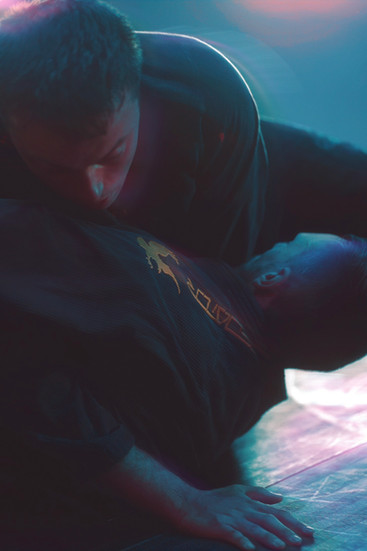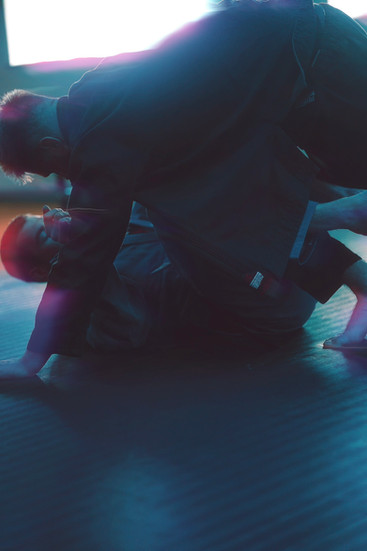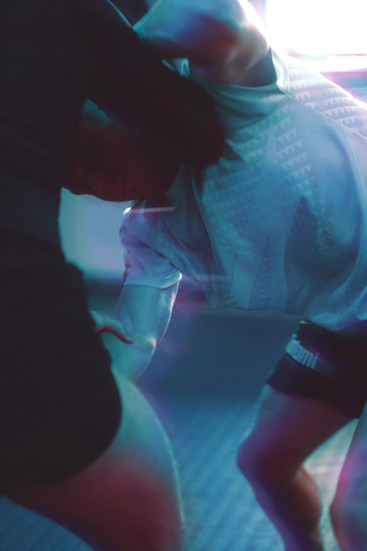Essential Beginner BJJ Techniques and Why They Matter
- Ian Hall
- Aug 5
- 3 min read
Starting Brazilian Jiu-Jitsu can feel overwhelming. The art is deep and technical, but at the beginning, you only need to focus on the basics. These core movements are what help you feel more confident on the mat, build a strong foundation, and enjoy your first steps into training.
Here’s a simple guide to help you learn what matters most when beginning BJJ.
Understanding the Basics of Beginner BJJ
Before getting caught up in techniques, it helps to understand what BJJ is built on.
This art is about leverage, control, and timing. Not strength. That’s what makes it accessible to anyone — regardless of size, age, or fitness level.
Start by getting comfortable in these core positions:
Guard: On your back, using your legs to control your opponent.
Mount: Sitting on top of your opponent’s torso.
Side Control: Controlling your opponent from the side.
Back Control: Behind your opponent with your legs hooked in.
These positions are the foundation of beginner BJJ. Once you understand where you are, it becomes easier to know what to do.
5 Beginner BJJ Techniques Worth Learning First
You don’t need a long list. Just a few moves that you can practice consistently.
1. Hip Escape (Shrimping)
This is your way out of bad spots.
Lie on your back, knees bent.
Push off one foot, move your hips back.
Use your arms to create space.
You’ll use this every week. It’s one of the best habits to build early on.
2. Bridge
When someone is on top in mount, this move helps you disrupt their balance.
Feet flat, drive your hips up.
Turn slightly to one side as you lift.
Combine it with frames to escape.
Bridging helps you stay calm under pressure and find space to move.
3. Basic Guard Passes
Getting past someone’s legs is a key part of BJJ.
Knee Slice Pass: Control the upper body, slide your knee through.
Toreando Pass: Push the legs aside, circle around the hips.
As a beginner, passing guard gives you control and puts you in a stronger position.
4. Rear Naked Choke
This is one of the cleanest, most effective submissions.
Get to the back with hooks in.
Slide one arm under the chin.
Lock and squeeze gently until your partner taps.
It’s a move that teaches control and calm under pressure.
5. Armbar from Guard
One of the first submissions most beginners learn.
Break your opponent’s posture.
Swing your leg over their head.
Extend your hips slowly.
You’ll start to understand timing and positioning through this move.
Is 30 Too Late to Start BJJ?
Not at all. In fact, many people start Jiu Jitsu in their 30s or later. What matters most is consistency — not age.
You may actually have some advantages:
Better patience and body awareness
More discipline with time and routine
A clearer sense of why you’re training
BJJ is built to meet you where you are. You’ll gain strength, improve mobility, and build resilience at any stage of life.
Tips for Practising Beginner BJJ Effectively
Here are a few habits that help:
Focus on fundamentals
Drill with intention, not just speed
Stay relaxed while rolling
Ask questions, especially after class
Watch good instructionals to reinforce your learning
Train with different partners to understand different body types and styles
These small habits go a long way.
Long-Term Success Starts with the Basics
Beginner BJJ doesn’t mean basic effort — it means laying the foundation properly.
Stick with the fundamentals. Celebrate the small wins. And train in a space that supports your learning, wherever you're starting from.
If you're curious about beginner BJJ, Ascend Jiu Jitsu in Ashford offers a calm, structured environment to help you learn. Our classes are beginner-friendly, coached with care, and designed to make the journey feel clear and rewarding.
Come try your first class. No pressure. Just the start of something solid.




























Comments